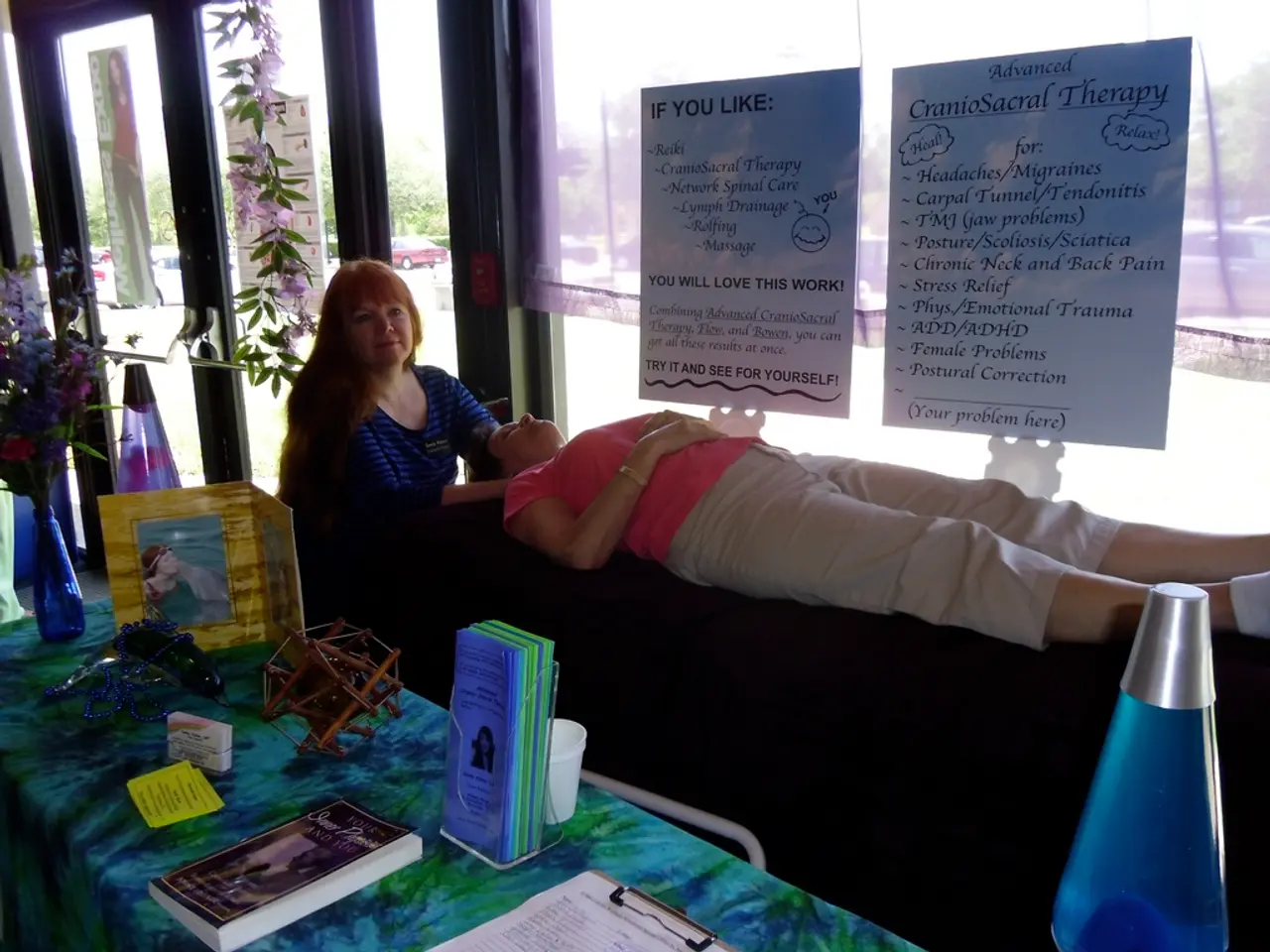Botox's Unexpected Benefit for Improving Sleep Quality, as Suggested by Professionals
Botox Offers Relief for Sleep-Related Disorders
Botox, a popular cosmetic treatment known for smoothing wrinkles, has non-cosmetic medical applications that are gaining recognition. In particular, it has been found to be effective in treating sleep-related disorders like bruxism (teeth grinding) and TMJ (temporomandibular joint) pain [1][2][5].
When injected into muscles responsible for clenching and grinding, Botox temporarily paralyses these muscles, reducing muscle tension, pain, and involuntary movements that disrupt sleep and cause discomfort [1][5]. For bruxism, Botox injections into the masseter muscle decrease the force and frequency of grinding during sleep, helping to reduce jaw pain, headaches, and tooth wear caused by excessive clenching [5]. For TMJ disorder, Botox can ease muscle spasms contributing to jaw pain, although its use here is often off-label and should be carefully considered alongside other treatments like physical therapy or bite guards [1][4].
The effects of Botox typically last around three to four months, requiring repeat treatments for ongoing relief [1]. It is essential to consult a qualified medical professional before considering Botox treatment for sleep-related issues [6].
Key points about Botox’s role in these conditions: - Temporarily inhibits muscle contractions involved in jaw clenching and grinding. - Leads to reduced muscle-induced pain and improves sleep quality by minimizing micro-arousals caused by bruxism. - Effects are temporary (~3–4 months), requiring maintenance injections. - Best used as part of a comprehensive treatment plan addressing underlying causes. - Not FDA-approved specifically for TMJ disorders but supported by clinical experience. - Side effects exist and consultation with a specialist is advised for proper evaluation and tailored care [1][4].
Besides its use for sleep disorders, Botox is approved for various medical uses, such as migraines, muscle spasms, and excessive sweating reduction [3]. However, its application for sleep-related bruxism and TMJ pain is medically supported but often off-label, necessitating guidance from specialists to ensure safety and appropriate combination with other therapies [2][4].
Signs of teeth grinding include morning jaw ache or stiffness, dull headaches, worn, chipped, or flattened teeth, sensitive teeth, a clicking or 'popping' jaw, disturbed sleep, and partners complaining of grinding noises [7]. Muscle tension in the jaw, neck, or shoulders can also disrupt sleep by sending discomfort signals to the brain and causing micro-awakenings [7]. Botox may help pave the way for more restful sleep when combined with relaxation techniques and using a supportive pillow [7].
In summary, Botox is an effective non-cosmetic option for reducing muscle hyperactivity that underlies bruxism and TMJ pain, helping improve sleep and reduce associated discomfort when used under medical supervision [1][2][4][5]. Always consult a professional before considering Botox treatment for any condition.
[1] Mayo Clinic. (2021). Botox for TMJ disorders. Retrieved from https://www.mayoclinic.org/diseases-conditions/tmj/diagnosis-treatment/drc-20374737
[2] American Academy of Facial Esthetics. (2021). Botox for TMJ Disorders. Retrieved from https://www.aafe.com/botox-for-tmj-disorders/
[3] Food and Drug Administration. (2021). Botox. Retrieved from https://www.fda.gov/drugs/drugs-a-z-listings/botox
[4] American Dental Association. (2021). Botox for TMJ Disorders. Retrieved from https://www.ada.org/en/science-research/topics/botox-for-tmj-disorders
[5] Cleveland Clinic. (2021). Botox for Bruxism. Retrieved from https://my.clevelandclinic.org/health/treatments/15872-botox-for-bruxism
[6] National Health Service. (2021). Botox for TMJ disorders. Retrieved from https://www.nhs.uk/conditions/temporomandibular-disorder/treatment/
[7] National Sleep Foundation. (2021). Signs and Symptoms of Bruxism. Retrieved from https://www.sleepfoundation.org/articles/signs-and-symptoms-of-bruxism
- Botox, initially known for enhancing fashion and beauty, is discovering a niche in the realm of health and wellness, aiding in the treatment of sleep-related disorders like bruxism and TMJ pain.
- In the context of health-mental, Botox has been suggested as a therapy for addressing persistent stress and tension, temporarily paralyzing muscles responsible for clenching, thus easing mental-health related discomfort.
- Style-conscious individuals may also benefit from Botox's FDA-approved uses for condoning migraines and muscle spasms, helping maintain a productive workday and overall well-being.
- For those prioritizing a holistic approach to health and balance, Botox, combined with relaxation techniques and fitness regimens, could potentially improve sleep quality and reduce discomfort, aligning with the principles of fitness and therapies-and-treatments that promote overall wellness.
- A sleep study or consultation with a mental health or dental professional is crucial to determine whether Botox treatments could complement other therapies for managing sleep disorders, particularly TMJ pain and bruxism.
- Further research in the field of health-and-wellness sciences could potentiate the development of CBD-infused Botox treatments for alleviating muscle tension and promoting relaxation, potentially enhancing sleep quality and improving mental health.




